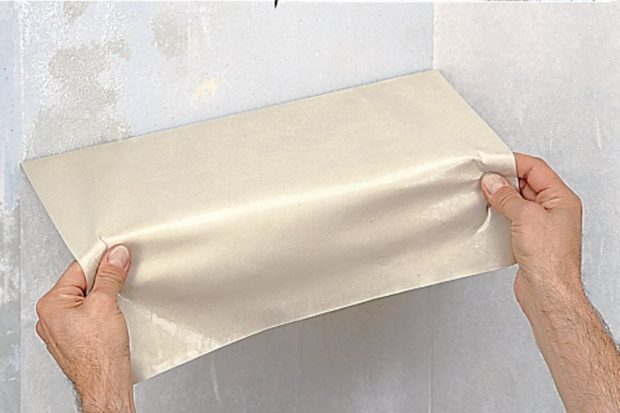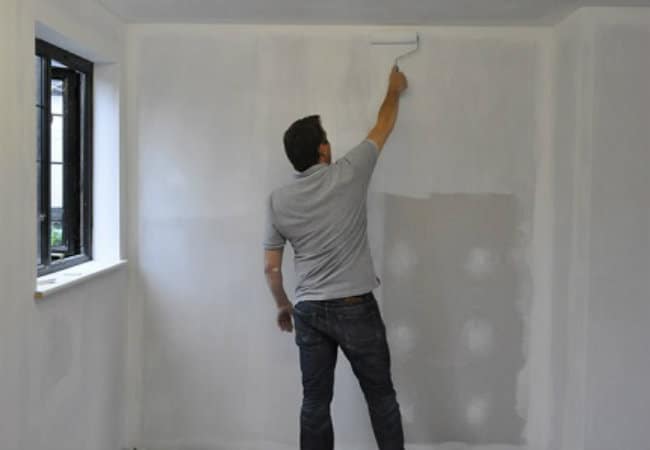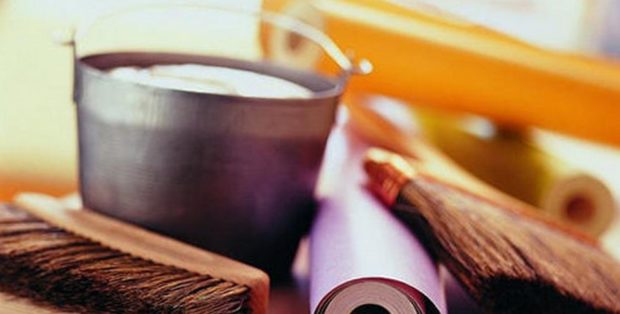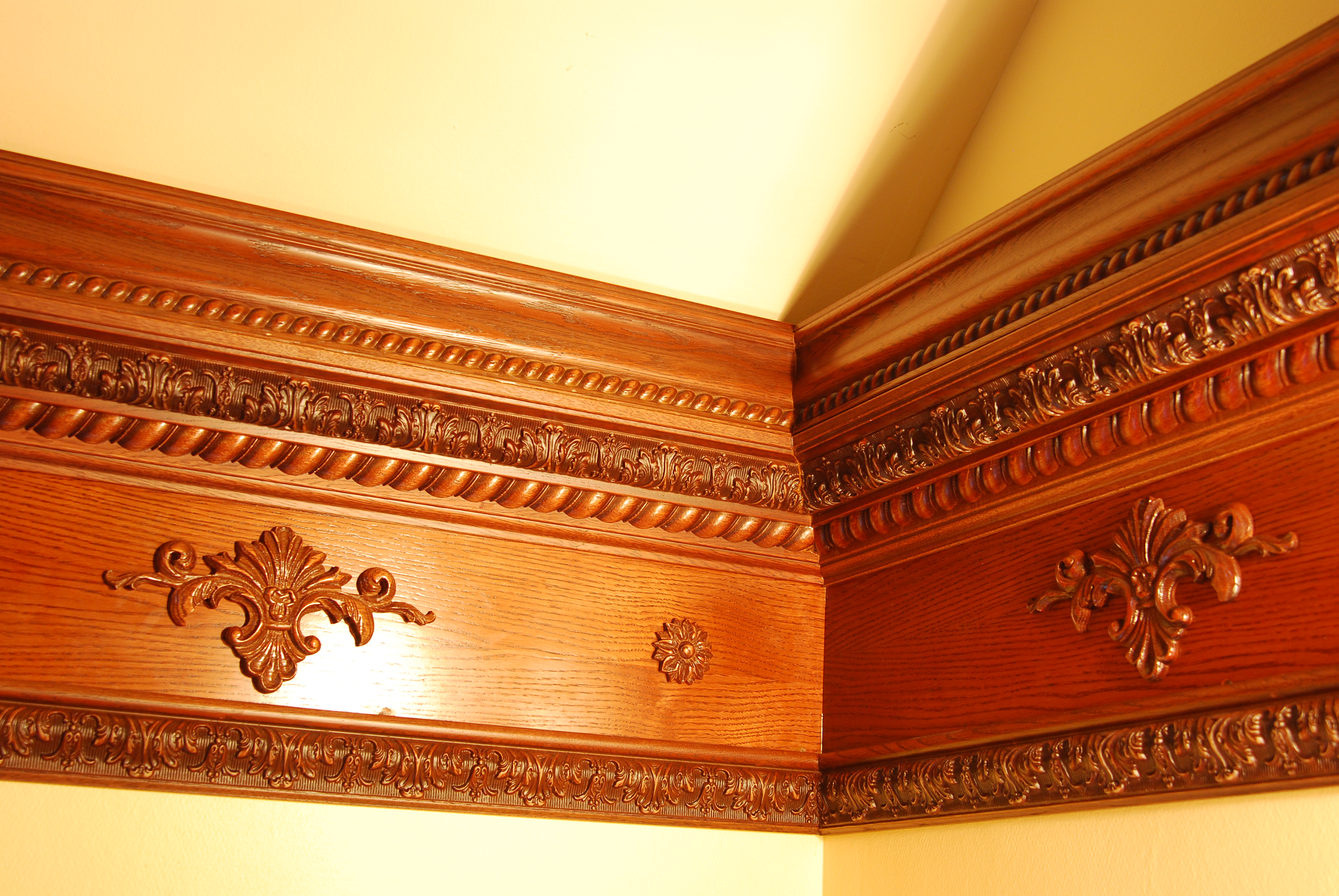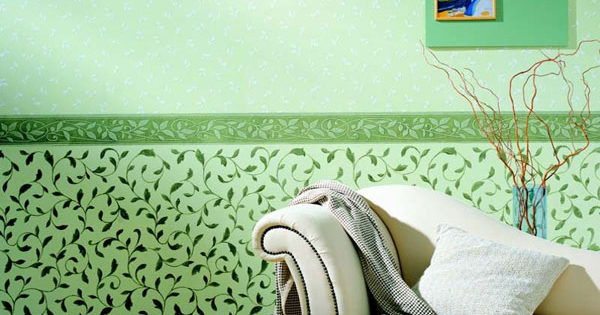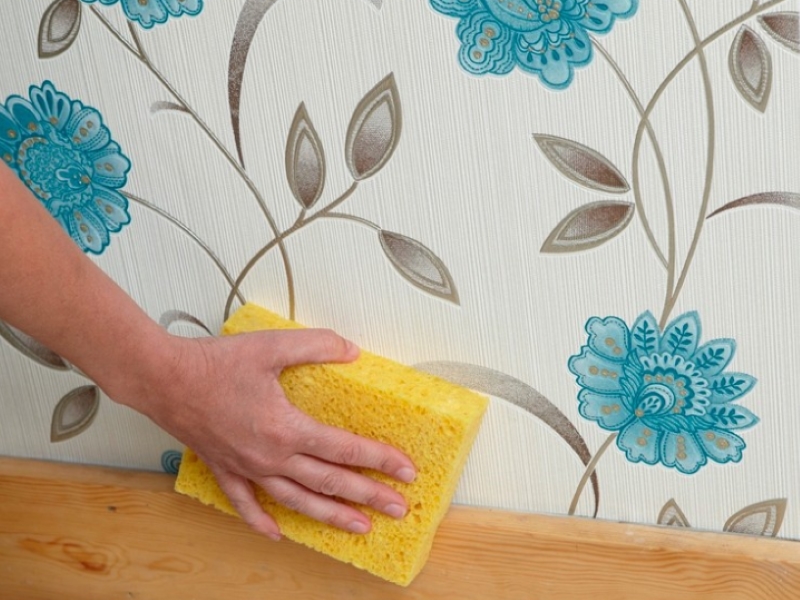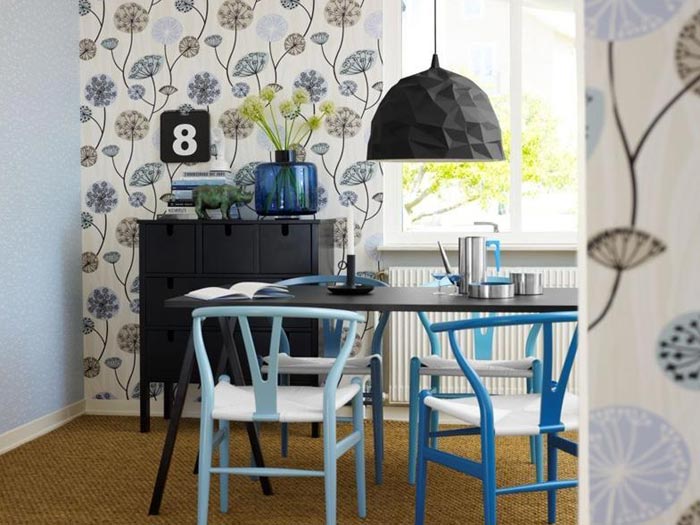How to choose the right wallpaper, what they are
Wallpaper is a detail of the interior, which occupies the largest area in the entire room, and, for sure, is immediately evident. And given the fact that on average in an apartment make repairs once every ten years, then the selected wallpaper will spend a decent period of life with the owners of the apartment. Therefore, their choice should be approached quite carefully, but, unfortunately, not getting lost in the modern assortment will be very difficult, especially for a beginner. Therefore, it makes sense to figure out how to choose wallpapers that will ideally fit a particular room, to understand what wallpapers can generally be and how they differ from each other.
What are the wallpapers?
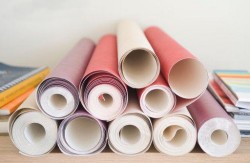 Classification of types of wallpaper is not entirely thankful, but you can still try to put everything in its place.
Classification of types of wallpaper is not entirely thankful, but you can still try to put everything in its place.
So, depending on surface type Wallpaper can be:
- smooth;
- embossed;
- with imitation of some material. Sometimes modern wallpaper, imitating a coating of tile, wood, etc., is difficult to distinguish from the original without feeling.
You can also distinguish several types of wallpaper water resistance:
- ordinary wallpaper, which is better to use in rooms where there is no direct contact with water, and pollution will be minimal, since they can not withstand moisture. They can only be cleaned in a dry way;
- moisture-resistant wallpaper can already tolerate cleaning with a slightly damp sponge, but will not be able to survive contact with a detergent;
- but washable wallpaper - just a find, because they can be washed with detergents, so you should not be afraid to stain such material;
- There are also super-washable wallpapers, which differ from the latter in that they can also be rubbed with a brush, and even washed every day. This is an example of stamina and endurance.
Also depending from density wallpaper is divided into lungs with a density of 110 g / m2, and if this figure is higher, then the wallpaper should be attributed to heavy. According to from appearance and color Wallpaper can be plain or with a specific pattern, then gluing them will be a little more difficult, since it will be necessary to dock the fragments.
Wallpaper material selection
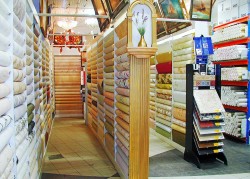
But, probably, the widest classification is the division of wallpaper by type of material:
- paper;
- vinyl;
- non-woven;
- cullets;
- photo wallpaper;
- textile;
- carpet;
- metal;
- liquid etc.
On this parameter, it is worthwhile to dwell in more detail and consider what advantages and disadvantages each of the listed types of wallpaper is fraught with.
Paper wallpaper
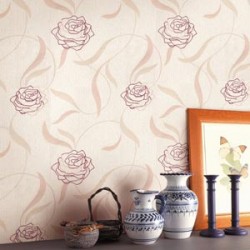 Paper wallpaper - This is a classic, they are the most frequent guest on the walls of even modern apartments. And all this is explained by their virtues, the main of which is a more than affordable price. Appearance can also suit any design idea, since paper wallpapers are produced in glossy and matte, with different patterns or just plain, can be embossed or even rough-woven. The latter are intended for coloring and can withstand up to 15 cycles of such repainting, so update interior it will be quite simple. Embossed wallpapers are two layers of paper that are pressed together in a wet state and acquire a certain relief.The coarse-fibrous paper between these layers also has shavings, therefore, in that and in that case an interesting effect is achieved only due to the texture. In addition, they can hide minor defects in the surface of the walls.
Paper wallpaper - This is a classic, they are the most frequent guest on the walls of even modern apartments. And all this is explained by their virtues, the main of which is a more than affordable price. Appearance can also suit any design idea, since paper wallpapers are produced in glossy and matte, with different patterns or just plain, can be embossed or even rough-woven. The latter are intended for coloring and can withstand up to 15 cycles of such repainting, so update interior it will be quite simple. Embossed wallpapers are two layers of paper that are pressed together in a wet state and acquire a certain relief.The coarse-fibrous paper between these layers also has shavings, therefore, in that and in that case an interesting effect is achieved only due to the texture. In addition, they can hide minor defects in the surface of the walls.
Also, the environmental friendliness of paper wallpaper, as well as their ability to “breathe,” is also a plus, so they form a healthy indoor climate. A slight ability to heat and sound insulation is also noted.
But there are certain limitations, which boil down to fragility, fragility, the inability to wash the wallpaper, with some difficulties when sticking, because then they are easy to tear, etc. That is why they are often used precisely in dry rooms without a high probability of ingress of dirt and water.
Vinyl wallpapers
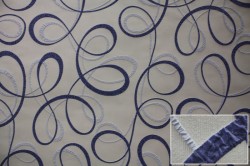 Vinyl wallpapers confidently compete with paper. They have a two-layer structure: the first layer is paper or fabric, the second is polyvinyl chloride, which provides all the properties of these wallpapers. Their main advantage is the ability to wash with detergents, excellent wear resistance, durability, resistance to temperature changes and various microorganisms, etc. It should be noted and excellent appearance, as well as a variety of possible species.
Vinyl wallpapers confidently compete with paper. They have a two-layer structure: the first layer is paper or fabric, the second is polyvinyl chloride, which provides all the properties of these wallpapers. Their main advantage is the ability to wash with detergents, excellent wear resistance, durability, resistance to temperature changes and various microorganisms, etc. It should be noted and excellent appearance, as well as a variety of possible species.
Depending on how the front layer is processed, vinyl wallpapers are divided:
- wallpaper based on foamed vinyl - in this case, a deeper texture and an interesting look;
- based on silk threads, and as a result, the wallpapers are especially chic;
- compact vinyl, which plausibly mimics coatings such as textiles, tiles, etc .;
- with chemical embossing, which gives the surface even greater resistance to abrasion and moisture.
Vinyl wallpapers are good to use in rooms with high humidity and people passing: kitchen, hallway, offices, etc. The disadvantages are not the easiest way to stick, which often only professionals can do. This wallpaper also does not allow the walls to breathe.
Non-woven wallpaper
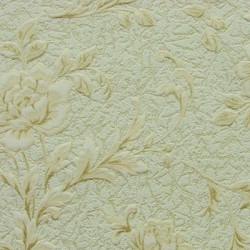 This type of wallpaper single-layer, made of fibrous cellulose with the addition of various components. The result is an eco-friendly, breathable wallpaper with a simple gluing method. But, unfortunately, such wallpapers require serious surface preparation, and during operation they are easy to scratch and damage.
This type of wallpaper single-layer, made of fibrous cellulose with the addition of various components. The result is an eco-friendly, breathable wallpaper with a simple gluing method. But, unfortunately, such wallpapers require serious surface preparation, and during operation they are easy to scratch and damage.
With the concept of non-woven wallpaper are often confusion, since non-woven vinyl wallpapers based on non-woven are also often called non-woven. Such wallpapers are usually produced. for painting, and can withstand about 3 cycles of repainting. They are already glued in a slightly different way, and they don’t let in air.
Textile wallpaper
Textile wallpaper are based on paper tight, on which the threads of the fabric are fixed. Without going into details of their manufacture, it is worth noting that they are quite environmentally friendly, pleasant to look and feel, have the ability to absorb sound, retain heat, and are difficult to combust.
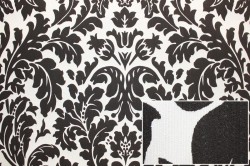
The variety of species is also striking, since it is possible to make textile wallpapers from almost any fabric, so you can meet linen, silk, synthetic, felt, jute and mixed fibers. They have slightly different characteristics that are characteristic of a particular fabric.
Among the disadvantages a relatively high price can be distinguished, some difficulties in the gluing process. It is also worth noting that fabric wallpaper more than everyone else has a tendency to attract dust, so they need more care.
Carpet wallpaper
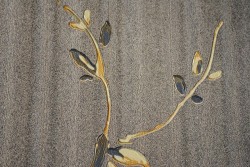 Carpet wallpaper something reminiscent of textile, but then a pile is attached to a paper or fabric base, and as a result a real one forms on the wall carpet, and this is a plus for comfort and noise isolation, but in terms of cleaning - this is a small minus, since carpets accumulate dust and static electricity. You will need to clean such wallpapers with a vacuum cleaner, so there will be no particular problems, but in order to keep the walls always clean, you will need to repeat this procedure regularly.
Carpet wallpaper something reminiscent of textile, but then a pile is attached to a paper or fabric base, and as a result a real one forms on the wall carpet, and this is a plus for comfort and noise isolation, but in terms of cleaning - this is a small minus, since carpets accumulate dust and static electricity. You will need to clean such wallpapers with a vacuum cleaner, so there will be no particular problems, but in order to keep the walls always clean, you will need to repeat this procedure regularly.
Cullet
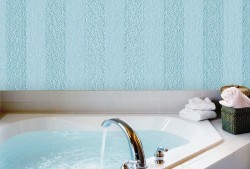
Fiberglass Wallpaper made with the participation of special glass threads, which affects the properties of the finished material. So, fiberglass threads can form various patterns and textures, which then, when stained, will have a good appearance. Fiberglass threads give wallpaper excellent performance: environmental friendliness, lack of a nutrient medium for various microorganisms, such wallpapers will not accumulate static electricity. In addition, they withstand the effects of fire, are moisture resistant, vapor permeable, and withstand the influence of certain chemicals, including detergents.
Separately, it is worth noting the reinforcing properties of fiberglass, so such wallpaper can be used on the surface with some flaws: small cracks, bumps, seams, etc. The advantage is the possibility of their use on the surface of any type: concrete, bricktree etc. - on all this they can be glued quite simply. Cullet, in principle, are ideal material, but slight flaw is not a very large selection of ornaments and textures.
Liquid wallpaper
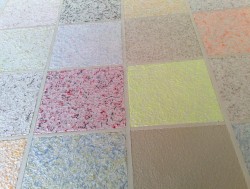 Liquid wallpaper and wallpaper can only be called a stretch, since they do not have a traditional paper or fabric base, and in general their application does not provide for gluing, but they also can not be attributed to plasters, since sand does not enter into their composition. Liquid wallpaper consist of cellulose, which is responsible for stickiness, different fibers and powder, which give decorative effect. All this composition is diluted with water in the correct proportion and put with a spatula on the walls or even the ceiling - not very prepared person can cope with this task.
Liquid wallpaper and wallpaper can only be called a stretch, since they do not have a traditional paper or fabric base, and in general their application does not provide for gluing, but they also can not be attributed to plasters, since sand does not enter into their composition. Liquid wallpaper consist of cellulose, which is responsible for stickiness, different fibers and powder, which give decorative effect. All this composition is diluted with water in the correct proportion and put with a spatula on the walls or even the ceiling - not very prepared person can cope with this task.
Liquid wallpaper can form a diverse surface: smooth, with a certain texture, with imitation of other materials, such as stone, etc. The surface itself is quite decorative and durable - it can last more than a dozen years. And caring for it is simple: since the dust on such wallpapers does not accumulate much, you can just walk with a vacuum cleaner, well, or with a damp cloth, because the surface is not afraid of moisture. If a fragment was damaged, then the defect can be easily fixed.
Only flaw such wallpaper - the inability to use in rooms where there is constantly increased humidity or the sun's rays constantly shine directly.
Linkrust
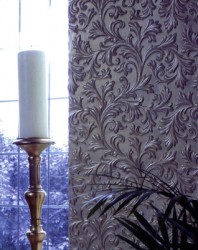 Linkcrust type wallpaper now returning to their former popularity. In them, as in many of the above types, there are two layers of material: a paper base and a decorative layer of plastic mass. To perform the latter, alkyd resins, various gels based on wood flour, cork chips, etc. are often used. This mass can be given almost any shape, as a result, you can make wallpaper for stucco, imitate some other surfaces, etc. The huge advantage of such wallpapers is that they are easy to clean, as they are easy to clean and can be washed.
Linkcrust type wallpaper now returning to their former popularity. In them, as in many of the above types, there are two layers of material: a paper base and a decorative layer of plastic mass. To perform the latter, alkyd resins, various gels based on wood flour, cork chips, etc. are often used. This mass can be given almost any shape, as a result, you can make wallpaper for stucco, imitate some other surfaces, etc. The huge advantage of such wallpapers is that they are easy to clean, as they are easy to clean and can be washed.
Cork Wallpaper
Cork Wallpaper - this is reference sample of naturalness and environmental friendliness. In their manufacture, oak bark is used, which is pressed under the influence of high temperatures, under these conditions, a natural adhesive is released, which provides the wallpaper with integrity and strength. Cork wallpapers create an atmosphere of comfort in the house, reduce the thermal conductivity of the walls, and increase sound insulation. Their disadvantages include the price, as well as some difficulties in sticking and operation, since they are easy enough to tear.
Wood veneer wallpaper
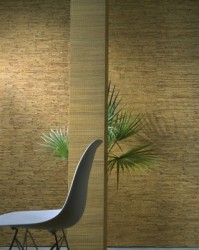 Wood is also used here, but already in the form of veneer, which is glued to the paper base. As a result, you can simulate the surface of a tree, and the coating will be environmentally friendly, in this indicator it is second only to cork wallpaper.
Wood is also used here, but already in the form of veneer, which is glued to the paper base. As a result, you can simulate the surface of a tree, and the coating will be environmentally friendly, in this indicator it is second only to cork wallpaper.
Such wallpapers they simply attach, absorb air, breathe, add thermal insulation to the walls and look great.Their price is a bit high, but wall decoration with such material will be much cheaper than using wooden panels.
Based on a sickle
In such wallpapers the paper base is covered with a layer of cellulose, and the top layer can be formed in different ways, forming a huge number of different textures. The finished material is white, it can be painted in any color, and more than once. And if you use waterproof paint, then such wallpaper can also be washed. Other advantages of this material include naturalness, breathability, vapor permeability, ease of use, etc.
Metal wallpaper
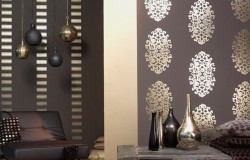 Metal wallpaper appeared relatively recently, and initially they were needed in order to reduce the negative impact of radiation from the equipment used: microwave ovens, computers, telephones, etc. But such a purpose is now rarely recalled, since, apparently, they turned out to be surprisingly good. As you can already guess, they are obtained by gluing a thin foil onto a paper base, on which you can create any ornament or pattern.
Metal wallpaper appeared relatively recently, and initially they were needed in order to reduce the negative impact of radiation from the equipment used: microwave ovens, computers, telephones, etc. But such a purpose is now rarely recalled, since, apparently, they turned out to be surprisingly good. As you can already guess, they are obtained by gluing a thin foil onto a paper base, on which you can create any ornament or pattern.
To the benefits Such finishes can be considered high decorativeness, the ability to thermoregulate, ease of care, as it is easy to wash the surface. But of the minuses it is worth noting the lack of the ability to let in air and the fact that these wallpapers are very easy to damage with sharp and not very objects.
Photowall-paper
Photowall-paper - This is a special type of wallpaper, which, as a rule, is used to decorate only part of the wall, but this part is also able to very much transform the room, betraying it of a certain character. They are made simply - by applying images on paper: landscape, flowers, animals, streets, cafes, etc. - the choice will amaze even professional designers. The manufacturer cuts the picture into fragments of a certain size and quantity, and the buyer already collects them at home. The gluing technique is not the easiest, but if desired, nothing is impossible.
Wallpaper and type of room
But not every type of wallpaper is suitable for any room. It is necessary to take into account both its functional features and the degree of illumination, as well as dimensions and configuration. If you carefully re-read all the above material, it will become clear that for the kitchen, for example, vinyl wallpapers, glass wallpapers or liquid wallpapers that are not so afraid of moisture, and which can be washed without fear, are suitable. Such hardy wallpapers are suitable for the hallway. But for a bedroom, a hall, a children's room, generally all types of wallpaper are suitable, including fabric, carpet, photo wallpaper, etc. With this, in principle, everything should be clear.
But when you decide on the type, you need to decide which color of wallpaper is better, because the decorative component of this material is just as important as the functional. Inadequately selected color can not only spoil all the advantages of the room, but also not very well influence those people who are constantly in it.
To choose the right color for the wallpaper, you need to analyze room light level, its purpose and size. So, if there are a lot of windows and they are facing south, then the room needs to be cooled, using cold shades, which will also slightly expand the space: blue, green, blue, gray, etc. Naturally, and vice versa, it is better to cover dark rooms with wallpapers of warm shades: peach, golden, yellow, orange, lemon and similar colors are suitable.
Each type of room He has his own recommendations regarding the choice of wallpaper, and if we have already figured out their type, we will move on to color. You can speculate on this topic for a long time, but we will get by with just a few tips. So, for the hallway Saturated shades, which are neither light nor dark at the same time, are suitable for a good one: no matter whether they are easily soiled or dark, they are not in the brightest room. Wallpaper for the living room, the faces of the apartment are selected to your taste, depending on the lighting, and most importantly, do not forget how these wallpapers will be combined with furniture. This also applies to other rooms.
The color scheme in the kitchen should be bright, as bright colors stimulate the appetite, but do not have acid shades that simply will annoy. In the bedroom they are always advised to use light pastel shades so that they are not particularly striking and not distracting from relaxation, but energetic people and youth can be advised with brighter options - you need to start from your preferences. In the nursery certainly nothing bright should be, so as not to cause aggression in a small child, and the teenager should not be distracted from school.
Also plays a role area and height of the room, therefore, the smaller and lower the room, the brighter the wallpaper should be, and a large pattern on them is undesirable - a maximum is some kind of small pattern.
In conclusion
It is worth adding a few more tips. So, choosing the wallpaper directly in the store, you need to focus not only on how they look in the roll - it is advisable to expand it and see how they will look in position on the wall. Always remember the combinations, so the wallpaper is chosen for the existing furniture and decor items, or they will then have to be combined with wallpaper. And if you are not sure what appearance the wallpaper should have, then it is better to opt for a monophonic version of a soft shade. Well, of course, build on the parameters of the room: for different humidity and temperature, different wallpapers are needed. Pay attention to certification and batch number - it must be the same, otherwise the color may vary slightly.

